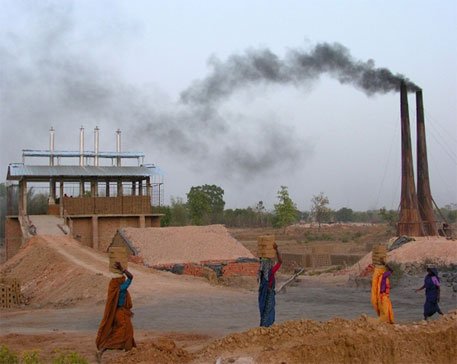[ad_1]

Kanpur, India: New research by Sachchida Nand Tripathi, Professor in the Department of Civil Engineering and Sustainable Energy Engineering, Indian Institute of Technology, Kanpur (IIT Kanpur), has identified the major sources of harmful air pollutants as well as their impacts. Human health in northern India. The study published in the prestigious journal “Nature Communications” shows that local emissions, especially from incomplete combustion of various fuels, play a significant role in poor air quality and related health risks in the region.
While previous studies have highlighted the severity of air pollution in India, identifying the exact sources and their relative contributions remains a challenge. Prof. Tripathi’s team, in collaboration with national and international researchers, analyzed air quality data from five locations in the Indo-Gangetic plain, including places in and around Delhi, to gain a comprehensive understanding of the issue.
Sachchida Nand Tripathi, professor in the Department of Civil Engineering and Sustainable Energy Engineering, IIT Kanpur, said, “The important insights from our study about the sources of air pollution and their impact on health in northern India will help us develop more effective strategies ” Improving air quality and protecting public health. The study has led to a greater understanding of the major role played by local emissions and inefficient combustion. It is a matter of great pride that the study has been published in Nature Communications, one of the leading peer-reviewed, open-access journals covering all natural sciences.
The study found that local sources and processes are the main factors contributing to widespread air pollution across the region. Inside Delhi, ammonium chloride and organic aerosols from traffic, residential heating and industrial activities are the major contributors. Outside Delhi, emissions from agricultural burning and the secondary organic aerosols formed from these emissions are more prevalent. Contributing to the problem is incomplete combustion of fuels such as wood, cow dung, coal and petrol. This creates harmful particles that can damage our lungs and cause various health problems.
Regardless of location, the study identified organic aerosols from incomplete combustion of biomass and fossil fuels as the major factor increasing the oxidative capacity of air pollution – a key indicator of its potential to cause adverse health effects. Prof. Tripathi further explained, “Oxidative potential refers to the free radicals that are produced when pollutants interact with certain substances in the environment or our body. These free radicals can cause damage by reacting with cells, proteins, and DNA. Oxidative capacity measures how likely air pollution is to cause this reaction, which can result in health problems such as respiratory disease, heart disease and accelerated aging. There is an urgent need to address this issue and reduce emissions through targeted interventions to improve combustion efficiency in various sectors.
Director of IIT Kanpur, Prof. Praising the research, Manindra Aggarwal said, “This study exemplifies IIT Kanpur’s commitment to finding solutions to important challenges facing India. Professor Tripathi’s research provides valuable insights and knowledge that can guide policy makers and stakeholders in their efforts to reduce air pollution and its harmful effects on our health. I congratulate Professor Tripathi and his team who are doing excellent research to solve the serious problems caused by air pollution.
The research emphasizes the need for comprehensive strategies that address local emissions sources and promote clean technologies, particularly in the transportation, residential and industrial sectors. Enforcing strict emission standards, promoting renewable energy sources and increasing public awareness about the health effects of air pollution will help achieve clean air and a healthy future not only for the North but for the rest of the country.
Read more about the study https://doi.org/10.1038/s41467-024-47785-5
Disclaimer: This media release is automatically generated. CSR Journal is not responsible for the content.
[ad_2]
Source link
Modified by Maaaty at Tuto Gadget

